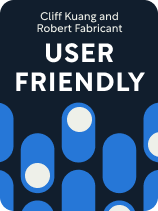

This article is an excerpt from the Shortform book guide to "User Friendly" by Cliff Kuang and Robert Fabricant. Shortform has the world's best summaries and analyses of books you should be reading.
Like this article? Sign up for a free trial here.
Is there a connection between technology and human values? How can we design technology to better reflect society’s values?
For the most part, User Friendly by Cliff Kuang and Robert Fabricant argues that technology has driven us away from basic human values. However, they believe that technology can be reprogrammed to better fit into people’s lives and help society improve.
Continue reading for more on how we can insert human values into our gadgets.
Designing Technology That Reflects Users’ Values
Kuang and Fabricant write that a strategy to create a user-friendly future is to combine technology and human values by designing technologies that reflect society’s values. To return to the previous ideals of the user experience design industry—like when consumer products were linked to social progress in the 1920s—companies must prioritize the users’ specific goals: things like productivity, creative expression, improved health, more equitable access to services and information, and more meaningful social connections.
(Shortform note: Some apps on the market that are based on consumers’ goals include apps for meditation and apps that help people monitor health conditions like diabetes. One potential factor distinguishing “healthy” apps from addictive ones may include the revenue model: Apps that rely on advertising revenue benefit from users maximizing screen time and viewing more ads. On the other hand, paid subscription models may rely more on customer satisfaction and less on ad revenue for profitability, making it less likely that the company will use addictive design principles.)
The authors assert that the basic principles of user-friendly design can be adapted in infinite ways to better people’s lives. For example, developing more advanced telehealth—accessing health services remotely using a cell phone or other device—could help make health care more equitable and affordable for people living in rural areas. In terms of social networks, Kuang and Fabricant suggest that social media could be re-envisioned to foster connections while allowing users to maintain their autonomy over their attention and mental well-being.
| Combating Harmful Effects of Technology Nir Eyal, the author of Hooked, discusses the double-edged sword of habit-forming technologies as well as some practical strategies that companies could use to help consumers maintain balanced relationships with technology. He acknowledges that the same techniques described in Hooked to help people form healthy habits, like exercising regularly, can also be used to make people addicted to technology. Some of his recommendations for companies to counteract this behavior include ending the auto-start feature for the next episode on a video streaming platform, having a company ask users if they’d like to limit their use to a specific number of hours, and deactivating social media newsfeeds during certain times of the day (upon request). He writes that while companies shouldn’t arbitrarily decide on an acceptable amount of time to spend on an app or website, companies should at least be obligated to reach out to users and offer safeguards—especially since they have detailed information on those users’ online habits. Eyal’s recommendations are optional modifications to restrict the use of products that are already designed to keep people engaged as long as possible, whereas Kuang and Fabricant advocate designing different technologies that are inherently beneficial for users. However, one main challenge of encouraging values-based technology design is the profit motive that encourages the exploitation of consumers. Some people argue that antitrust laws are the best tool we have for combatting harmful technologies. These advocates suggest that if antitrust laws encourage more competition among big tech companies, it’s more likely that companies will compete by developing innovative mental health safeguards. |

———End of Preview———
Like what you just read? Read the rest of the world's best book summary and analysis of Cliff Kuang and Robert Fabricant's "User Friendly" at Shortform.
Here's what you'll find in our full User Friendly summary:
- A look at the evolution of user-friendly design, from the 1920s to today
- How excessive user-friendliness is causing a technology addiction
- How user-friendliness can be used to reflect the values of customers instead






